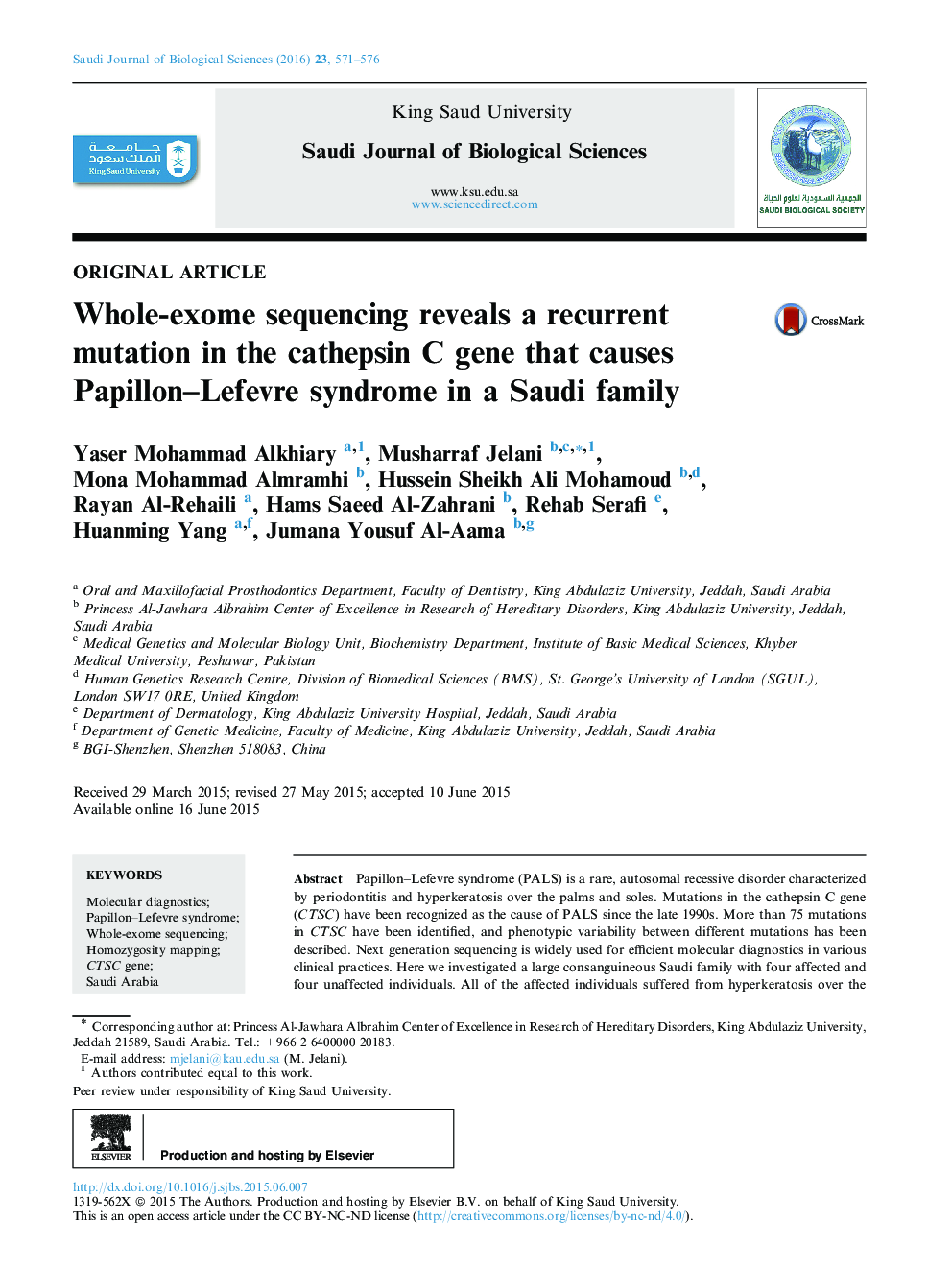| کد مقاله | کد نشریه | سال انتشار | مقاله انگلیسی | نسخه تمام متن |
|---|---|---|---|---|
| 4406111 | 1618670 | 2016 | 6 صفحه PDF | دانلود رایگان |

Papillon–Lefevre syndrome (PALS) is a rare, autosomal recessive disorder characterized by periodontitis and hyperkeratosis over the palms and soles. Mutations in the cathepsin C gene (CTSC) have been recognized as the cause of PALS since the late 1990s. More than 75 mutations in CTSC have been identified, and phenotypic variability between different mutations has been described. Next generation sequencing is widely used for efficient molecular diagnostics in various clinical practices. Here we investigated a large consanguineous Saudi family with four affected and four unaffected individuals. All of the affected individuals suffered from hyperkeratosis over the palms and soles and had anomalies of both primary and secondary dentition. For molecular diagnostics, we combined whole-exome sequencing and genome-wide homozygosity mapping procedures, and identified a recurrent homozygous missense mutation (c.899G>A; p.Gly300Asp) in exon 7 of CTSC. Validation of all eight family members by Sanger sequencing confirmed co-segregation of the pathogenic variant (c.899G>A) with the disease phenotype. This is the first report of whole-exome sequencing performed for molecular diagnosis of PALS in Saudi Arabia. Our findings provide further insights into the genotype–phenotype correlation of CTSC pathogenicity in PALS.
Journal: Saudi Journal of Biological Sciences - Volume 23, Issue 5, September 2016, Pages 571–576